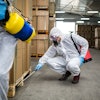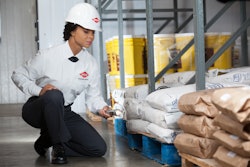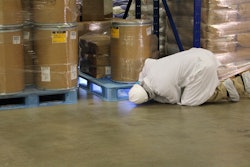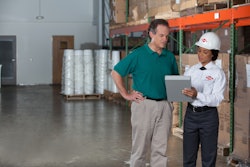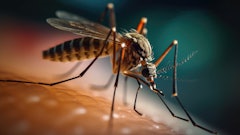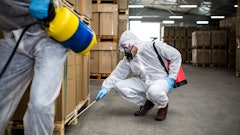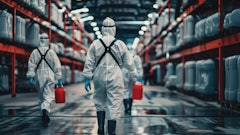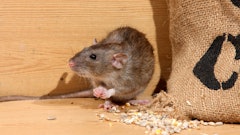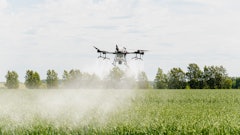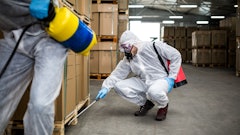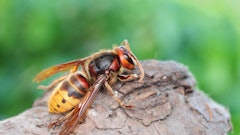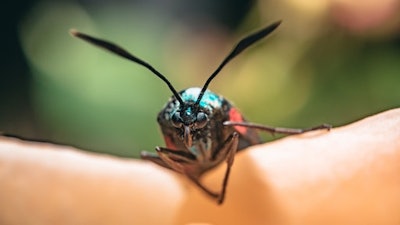
All pests will have certain environmental preferences and survival needs. When the right conditions are met, pests thrive. Sanitation, employee practices, facility processes and structural and equipment design can either hinder or help pest’s survival. In fact, not all areas within a facility will meet the needs of the pest equally, and certain areas will have a higher risk for pest development than others.
Here is a list of some of the 10 most common areas of pest activity by product type, structural design and practices. Utilize this list in prioritizing areas for regular inspection as part of a pest prevention program.
Rack legs
Cleanability is rarely a consideration in designing and purchasing racking systems for warehouse storage. Commonly, they are either three- or four-sided with numerous holes drilled into the leg for ease of assembly. The problem is that the holes can provide areas for food to accumulate and pests to travel unobserved.
The openings in the leg do not provide sufficient space for cleaning tools to access and effective cleaning will take time to complete.
The issue can be compounded by the addition of guards installed to protect the base of the rack leg from forklift damage. These too can be difficult to clean and provide areas of food product accumulation for mice and stored product pests.
Horizontal rack supports
Not only can vertical supports offer areas for pest harborage, but so too can horizontal rack supports. In addition, they may have holes or channels in them for pests to travel. Supports used for rack grating can provide “U”-shaped wells for product spills to accumulate.
Capping holes and mounting “U”-shaped wells upside down can assist in reducing food accumulations.
Dumpster/compactor areas
A poorly maintained dumpster pad can provide food for flies, birds and rodents. The type of dumpster and dumpster seal can make a difference in product leakage from the box and/or compactor seal. A single unit designed for liquid disposal will reduce leakage. Unfortunately, most facilities do not have the all-in-one unit.
Cleaning between the unit and the dumpster pad is required when the disposal company changes out the box. This is the only time when the pad is exposed for effective cleaning.
Pads should be maintained and free of cracks to prevent food contamination of the soil or flies could develop.
Make sure that a clean dumpster box is provided by the disposal company when changing out the box. Fly maggots can be delivered with a dumpster box that has been emptied, but not washed.
Trailers for repurposing food and other wastes
It is important to reduce wastes that go to landfills, but how you handle these repurposed wastes can make a difference in pest pressures at the site. Trailers should be sealed to block insects and vertebrate pests to forage on the materials inside.
Birds, flies, racoons, rodents and feral cats are common pests of poorly sealed trailers used for repurposing food. It is important to have a program for cleaning the trailers in between use.
Food residue left in trailers can support stored product pests and flies. If the trailer will be docked at a dock door, make sure the dock door is kept closed while not actively loading and that the trailer door be kept closed as well.
Lastly, understand where the trailers go and what controls are in place to prevent movement of pests like rodents from the repurposing drop off site to the warehouse.
Balers
Balers may be used to condense cardboard and paper bags for recycling and disposal. Food residues on these items can support pests and accumulate underneath and around the baler unit.
Balers are often difficult to clean due to their design and the source of stored product pests and flies. It’s important to check these areas frequently.
Damaged goods
Products in the damaged goods may provide easy access for pests to feed and develop. Damaged cans can be prime area for flies.
Make sure there is an area designated for damaged goods and that warehouse staff are moving damaged items to this assigned area for ease of inspection and disposal.
Product type
Certain products may be more susceptible to pests than others, such as pet and bird seed. This is due to the fact that the products go through fewer kill steps in processing.
Bagged packaging may be easier for pests to enter due to holes provided in sewn bags or lack of complete seals. Aged product and expired inventory will likewise be more likely to be infested.
Corrugate wall construction
Metal corrugated walls are an economical building construction material, but are subject to damage and more difficult to pest proof. Damaged walls may provide pests access from the exterior or void spaces for pest development to the interior.
In some facilities, rolled insulation is placed over the corrugate wall for temperature control, making it a perfect location for rodents to travel and nest.
Break rooms and locker rooms
Areas where employees eat and store their personal belongings can see pest activity. Hitchhiking insects like cockroaches and bed bugs may be brought into facility on personal belongings.
Food materials may attract and support other pests like mice and flies.
Wash bays and drains for floor scrubbers
The moisture and organic material from equipment washdown bays and floor scrubber units may support pests like flies.
It is important to frequently clean drains to remove organic material, which may allow fly development. Maintain floors and walls free of cracks, and use squeegees and fans to help dry areas quickly.
Filth flies and small flies will need moist organic material for development. Targeting both the moisture levels and amount of organic material can be helpful in reducing fly populations.



